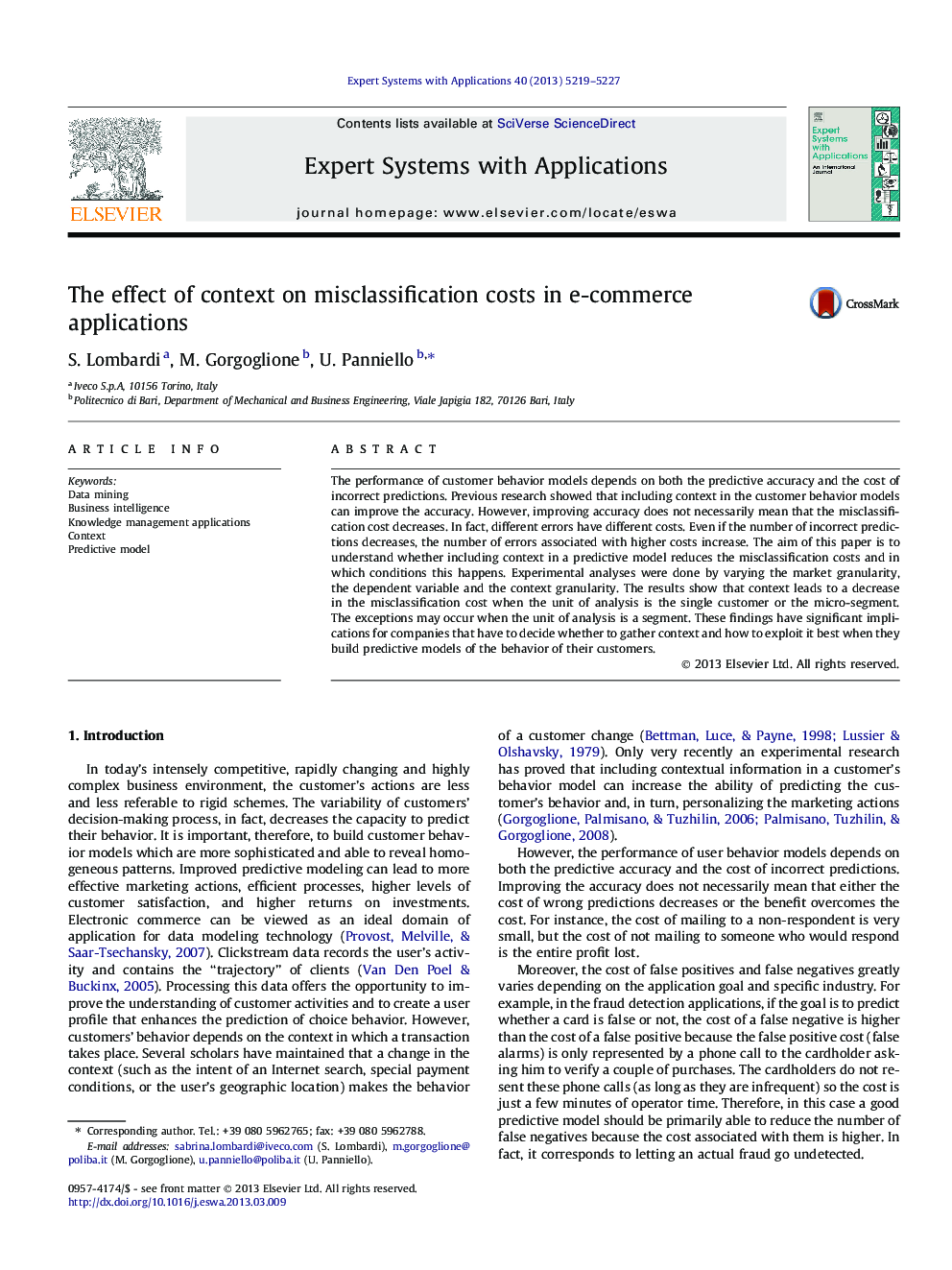| کد مقاله | کد نشریه | سال انتشار | مقاله انگلیسی | نسخه تمام متن |
|---|---|---|---|---|
| 383784 | 660833 | 2013 | 9 صفحه PDF | دانلود رایگان |

• Conditions under which a contextual predictive model outperforms an un-contextual one in terms of misclassification costs.
• If the unit of analysis is a single customer or a micro-segment, including context reduces the total cost.
• If unit of analysis is a large segment or whole market, including context depends on dependent variable and cost of errors.
• The finer the contextual information the stronger the effect of context on total cost.
• The use of contextual predictive models depend on unity of analysis, dependent variable and costs of incorrect predictions.
The performance of customer behavior models depends on both the predictive accuracy and the cost of incorrect predictions. Previous research showed that including context in the customer behavior models can improve the accuracy. However, improving accuracy does not necessarily mean that the misclassification cost decreases. In fact, different errors have different costs. Even if the number of incorrect predictions decreases, the number of errors associated with higher costs increase. The aim of this paper is to understand whether including context in a predictive model reduces the misclassification costs and in which conditions this happens. Experimental analyses were done by varying the market granularity, the dependent variable and the context granularity. The results show that context leads to a decrease in the misclassification cost when the unit of analysis is the single customer or the micro-segment. The exceptions may occur when the unit of analysis is a segment. These findings have significant implications for companies that have to decide whether to gather context and how to exploit it best when they build predictive models of the behavior of their customers.
Journal: Expert Systems with Applications - Volume 40, Issue 13, 1 October 2013, Pages 5219–5227